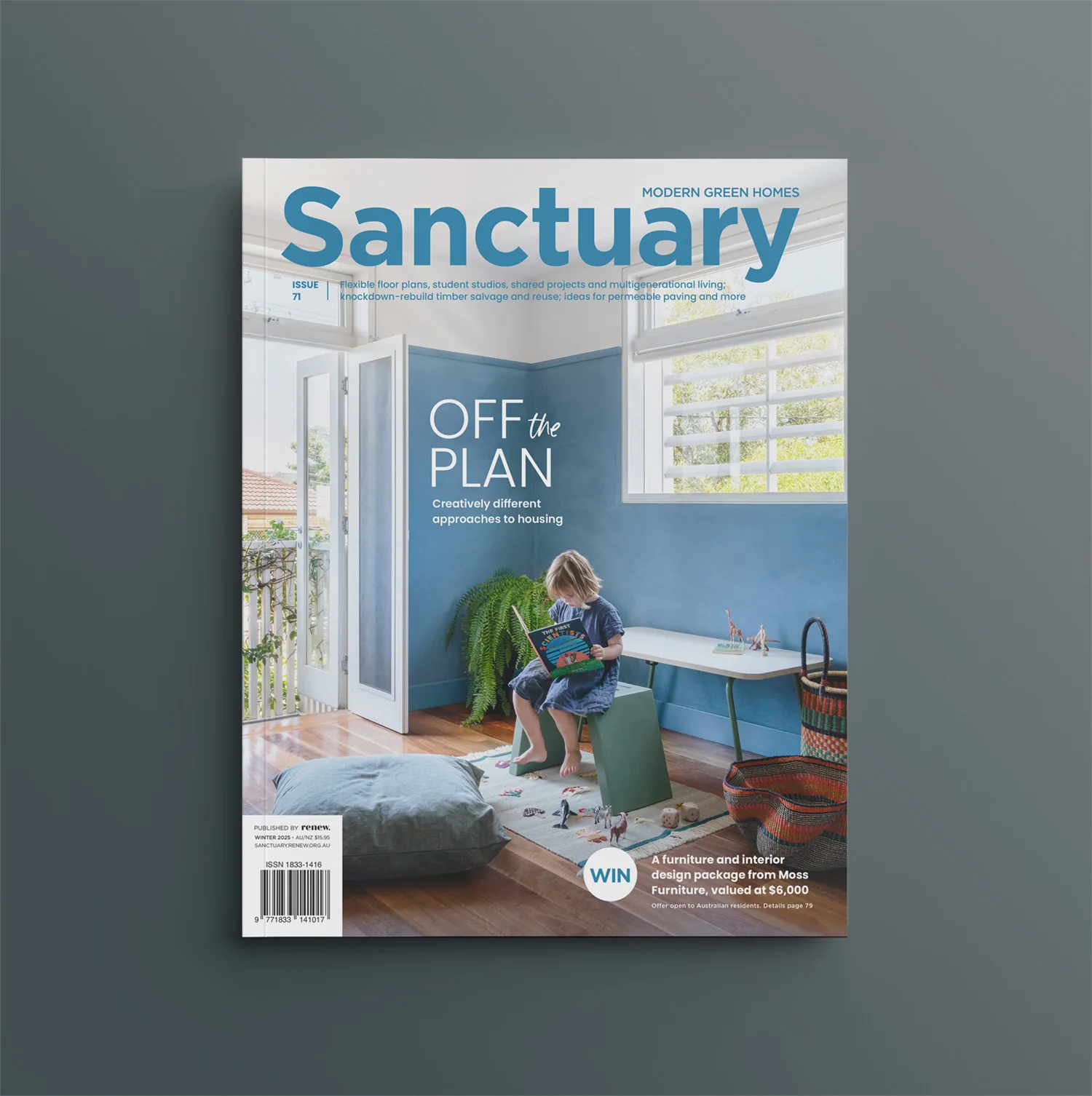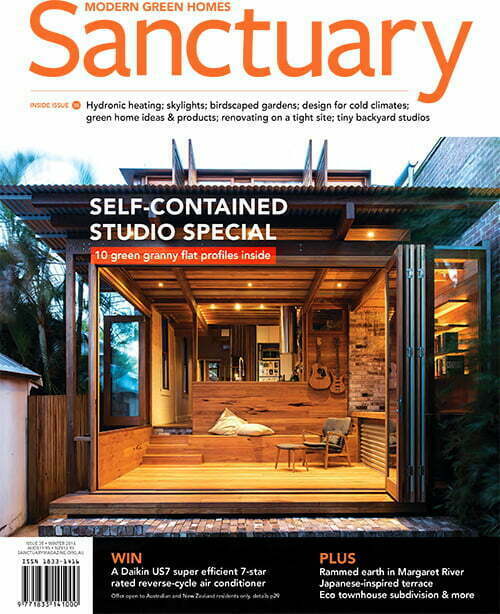Daylight your home
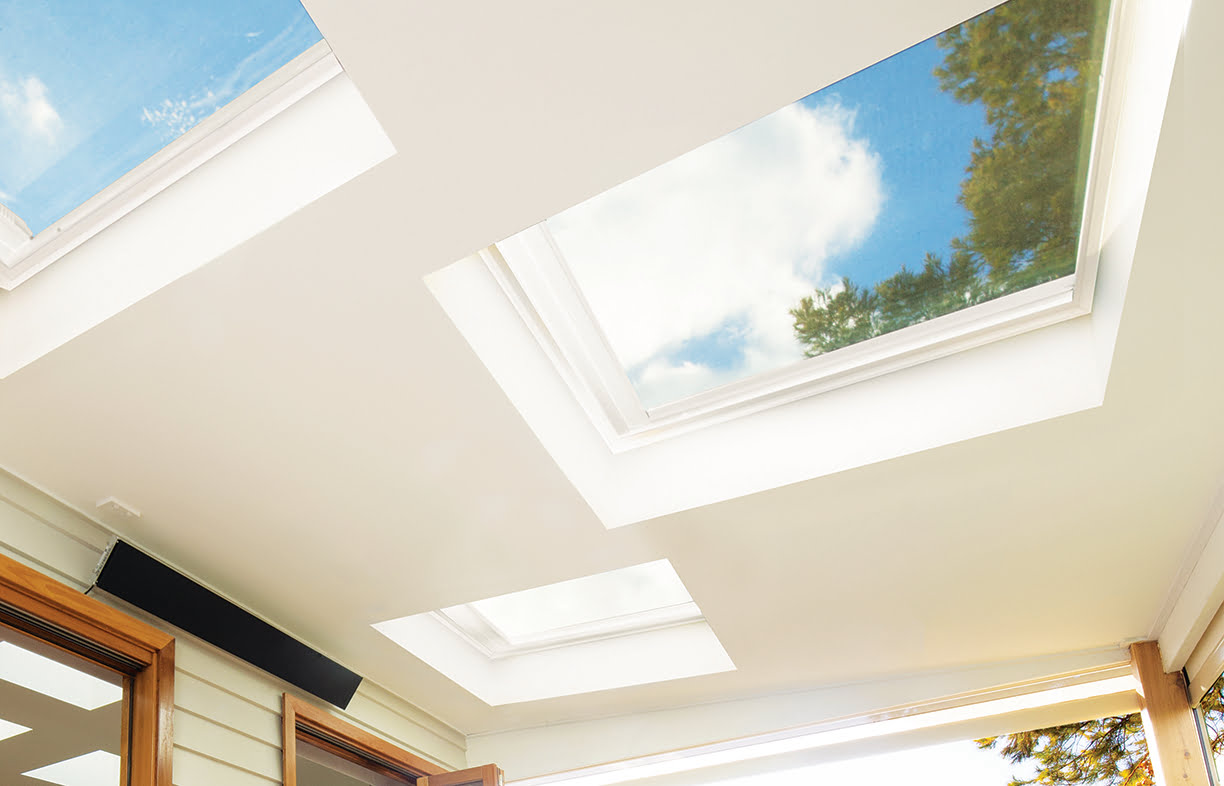
When investigating a skylight for your home, the first question to consider is whether you need sunlight or just light. With the advent of solar-powered LED technologies you can now bring ‘daylight’ into your home or apartment without compromising the building envelope – but if you want the real thing, there are several energy-rated skylights on the market. Dick Clarke explains.
I have been playing around with skylights for nearly 40 years and have tried just about every trick to get daylight into dark places.
In the 1970s I built double glazed skylights before Velux was heard of, and long before WERS (Window Energy Rating Scheme) had been conceived. In the 1980s I built ‘tetrahedroid lightshafts’ (a term invented to describe their weird geometry). In the 1990s I tried flexible reflective shafts descending two storeys. In the 2000s I used a photovoltaic panel to directly drive LED lights to create virtual daylight. These have all become commercially available– except the tetrahedroid shaft which is still unique!
You can now buy just about any kind of skylight you can imagine to daylight your home. Skylights are of course just one method for doing this – atriums, lanterns or clerestory windows are others, but they are a whole other facet of bringing natural light into your home that must be considered at concept stage, and cannot be easily retrofitted. This article focuses on skylight applications, and the advantages of commonly available products which can be used to daylight your house.
Daylighting
Introducing natural light into buildings – or daylighting – has long been recognised as extremely beneficial to human wellbeing. It also reduces demand for artificial lighting, which can reduce running costs and emissions. For this reason, daylighting is recognised by the Green Building Council’s Green Star rating scheme, and also by the even more rigorous Living Building Challenge, and by most other environmental design tools, including BASIX in New South Wales.
Skylights have come a long way since the inefficient single-skin acrylic-domed skylights which came in either clear or translucent. They leaked masses of heat – both in and out – and in residential applications this issue was always a problem. These skylights are now penalised in all energy rating schemes, and have virtually disappeared from residential use, and rightly so.
The important considerations when assessing the quality of a skylight are the same as for windows: solar radiant heat gain (SHGC) and conducted heat flows (insulation value, expressed as conductivity in the U value).
WERS covers skylights but not all available products have been rated, however this scheme is still very useful for finding the most thermally efficient products. See WERS skylight products and Your Home for more information on how heat flows through glass.
Roof windows
The roof window is a type of skylight that is most suited to applications where you want to enhance amenity, such as views of the sky or surrounding vegetation, or introduce windows into a loft. But as in all things, it’s a question of balance. For all their wonderful benefits, it’s a frustrating fact that every roof window will bleed heat at a higher rate than even a moderately insulated roof and ceiling, no matter how efficient it is. To avoid compromising the comfort and performance of your home, you need to plan and size roof windows carefully.
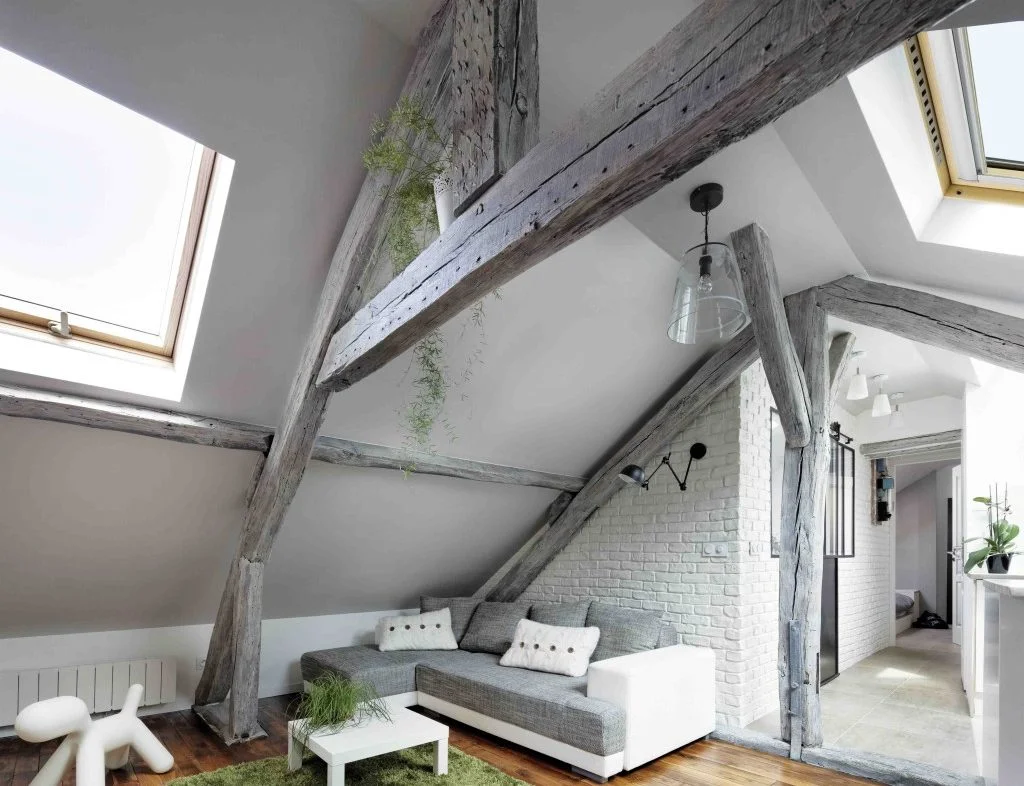
Rated roof windows
The great leap forward in roof windows came when European products appeared with double glazing and insulated timber frames. These are now the default choice, with common brands like Velux and Fakro being the most recognisable; local manufacturer Skydome also has a similar range of WERS-rated roof windows that perform equally well.
Each comes in a variety of operational modes: fixed and top hinged, remote or manual control, with some having the option of low-volume ventilation to allow air exchange in cold conditions. They also come with a selection of reflective and block-out blinds – essential in summer. The key to their performance is the way the softwood frame is profiled to act as both insulator and to assist in sealing. They are clad externally in aluminium for longevity and weather protection.
Sizing and orientation
The size and number of skylights in a space must be considered carefully. A good rule of thumb: a well-positioned skylight need not be more than two to four per cent of a room’s floor area to provide effective sunlight; 10 per cent is certainly way too much.
Orientation also needs careful planning. South-facing roof windows bring in lovely reflected light, but if the geometry is incorrect, may also bring in direct summer midday sun – not delightful at all. Alternatively, a steeply sloping north-facing roof may provide great low winter sun while keeping most high summer sun at bay. Roof windows are really only recommended in non-tropical Australasia: southern Australia and all of New Zealand.
Installation
Depending on the room and ceiling configuration, the roof window will require some sort of shaft between it and the ceiling. Raked ceilings have small parallel shafts that are easily constructed and are unobtrusive. Flat ceilings require careful thought, especially if you want the skylight to fan its direct sunlight across the room. If retrofitting, the building’s structure must also be considered. If you make the shaft too large, the volume may convect too much warm air out in winter, making the room feel cooler, and especially if the skylight itself is excessively large.
Tubular skylights
Tubular skylights are very effective at delivering abundant light through a relatively small opening, between 200mm and 400mm in diameter. They may use an angular selective clear dome on the roof to optimise the low winter sun angles. The tubes are either flexible foil or solid polished stainless steel, the latter having higher reflectivity. These skylights spread light evenly through the room using ceiling diffusers; the most efficient diffusers are the Fresnel lens type, which can be circular or square.
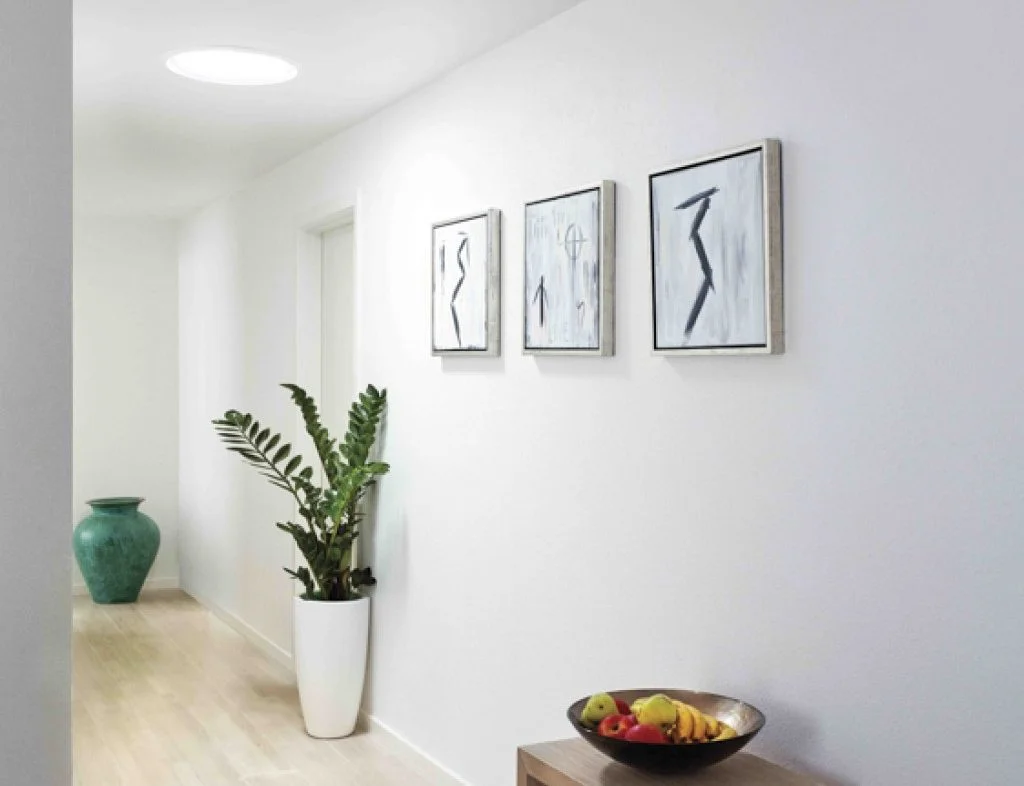
Advantages and applications
The advantages of tubular skylights are twofold: they can be located in slightly awkward and tight spaces where a conventional roof window or its shaft could never fit; and they cause very little heat gain or heat loss.
They can be used safely in the tropics, and can also have lights installed inside the tube, so that the same fitting is used for daylighting and night light. Some can be coupled with exhaust fans.
Controlling the light
Tubular skylights found their niche initially lighting minor rooms and utility spaces. I fitted one in my teenage son’s bedroom to encourage him to arise a little earlier than noon each day. It certainly worked! But I soon discovered that he put a towel over the roof dome to preserve a snoozy dimness. You can get controllable dimmers, but don’t tell your teenagers.
The larger, high efficiency tubes and square diffusers have also found a place in living and work areas. We have a Solatube DS190 with angular selective roof dome and a large Fresnel lens diffuser which gives wonderful light to our drawing office.
LED daylighting – PV+LED direct drive
Sometimes referred to as LED or virtual ‘skylights’, these systems are solving all sorts of problems that used to be too hard or too expensive using a skylight. These ‘daylighting’ systems mimic skylights using two technologies which are now mature – photovoltaics (solar generated electricity) and LEDs, which are now both at a low point on the cost curve.
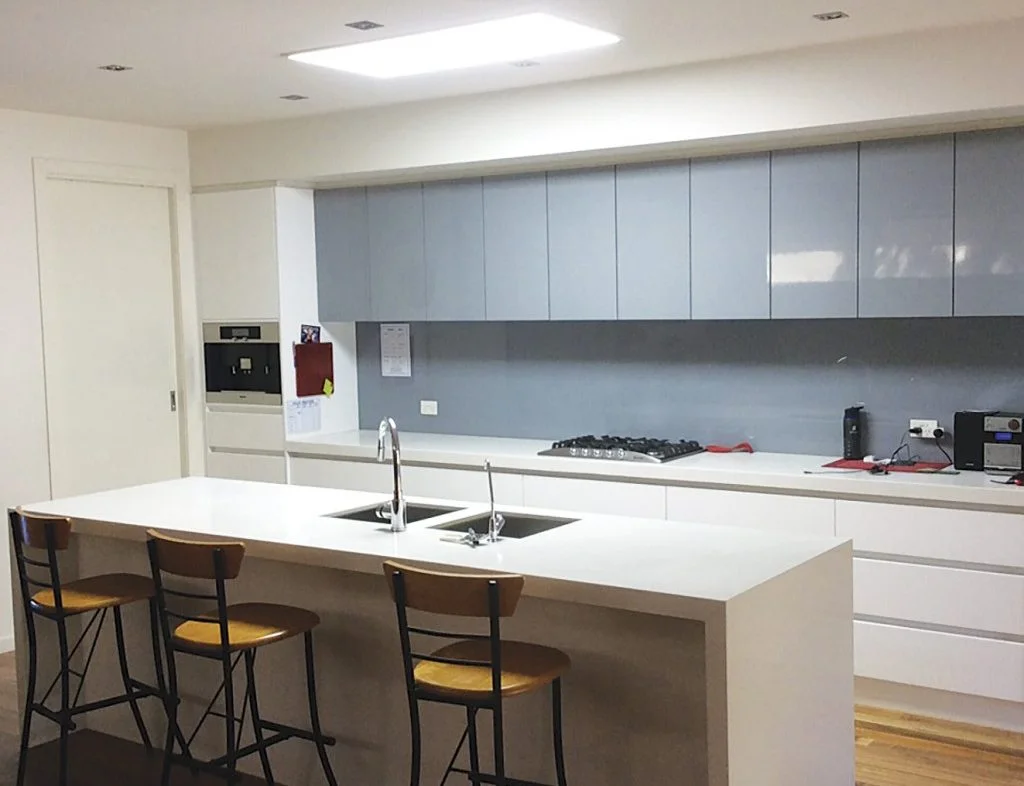
How they work
They are conceptually very simple, they use: a PV panel on roof, cable to carry extra-low voltage DC current to lights (usually via a smart driver), and light fittings on the ceiling which operate once the sun rises. Downstairs can be literally two or three storeys and many metres away, making this a versatile option for getting virtual daylight into difficult spaces. Though as in all things, check the quality and warranty before you buy.
Bedrooms can get extra light this way (but note bedrooms still need an external window to meet building codes) and they can be switched off if the teenager really needs their beauty sleep.
Effectiveness
I installed a Redilite 64 watt system powering three LED lights – and was very impressed with the brightness. Even without direct sun on the PV panel, these lights are very effective. And when the sun climbs above the treeline in the morning they really hit their stride – it is simply amazing. We now issue sunglasses to people before they enter the kitchen. Yet there is no heat gain or loss, because there is no hole in the roof compromising the building envelope.
Light range
You can specify any colour light you like with LEDs, so it’s important to plan the desired effect. If you want to fool yourself (in the nicest possible way) that you are enjoying daylight, then 4000 to 4500K (Kelvin) is the ideal colour range: it is a good approximation of sunlight, and suits our circadian rhythms. If you choose warm white (2700 to 3000K) then you will feel like it’s night time, and that can be confusing during the day. A dilemma may arise if you use the same fittings for day and night lighting – something I tend not to do, I’d rather have two simpler sets of lights. Many LED fittings now have adjustable colour temperatures, but this appears not to have entered the off-the-shelf market for this type of product as yet.
Remember LED systems do not provide real daylight. If it’s exposure to the sun’s rays that is required you will need a skylight.
Remote daylight via fibre-optics
There is a ‘best of both worlds’ product available in Europe from Parans. A sunlight collector is located somewhere suitable on the roof, and fibre-optic cables are run to any location deep within the building, where a distributor spreads the sunlight out at the desired intensity. The cost of the components – especially the optic fibre – is not insignificant, and as yet there is no distributor in Australia. Current exchange rates would place this at the top of the price pile, but it appears to be the only practical way to provide real sunlight to spaces with no other chance of receiving natural light, so for some houses it could be quite viable.
Which to choose?
At the end of the day, it’s horses for courses and the sun shines on them all. Making the right choice will depend on a range of factors, including whether you need sunlight or just light. But whichever type you choose, it has to be designed and installed correctly to give the best result.
It is important to use products that meet all components of the relevant standards, such as AS/NZ-4285-2007. Reputable manufacturers of skylights are members of the Skylight Industry Association. WERS ratings for skylights are also very important. Photovoltaic solar LED equipment needs to meet a different set of standards since they are not skylights and no roof penetrations or thermal transfer is involved. They instead use a combination of an extra-low voltage (ELV) photovoltaic panel, wiring and lighting. ELV products can be installed by a ‘competent person’, but there can be safety issues, so best to follow the manufacturer’s instructions carefully, and as with all consumer goods, check the warranty.
Recommended for you
 Ideas & Advice
Ideas & Advice
On the drawing board: Two homes from one
In Canberra, Jenny Edwards and her team are becoming experts in conjuring comfortable dwellings for two or more groups of people from older homes that used to house just one.
Read more Sustainable Design
Sustainable Design
Sustainable House Day 2025
On Sunday, 4 May 2025, Sustainable House Day returns, offering a unique opportunity to explore some of Australia’s most inspiring eco-friendly homes. We bring you an overview of the event, plus a sneak peek at a handful of the great homes participating.
Read more Design workshop
Design workshop
Design workshop revisited: Small space success
With some small but important changes to the internal layout based on our expert’s advice, this expanding young Canberra family is getting more out of their diminutive apartment.
Read more